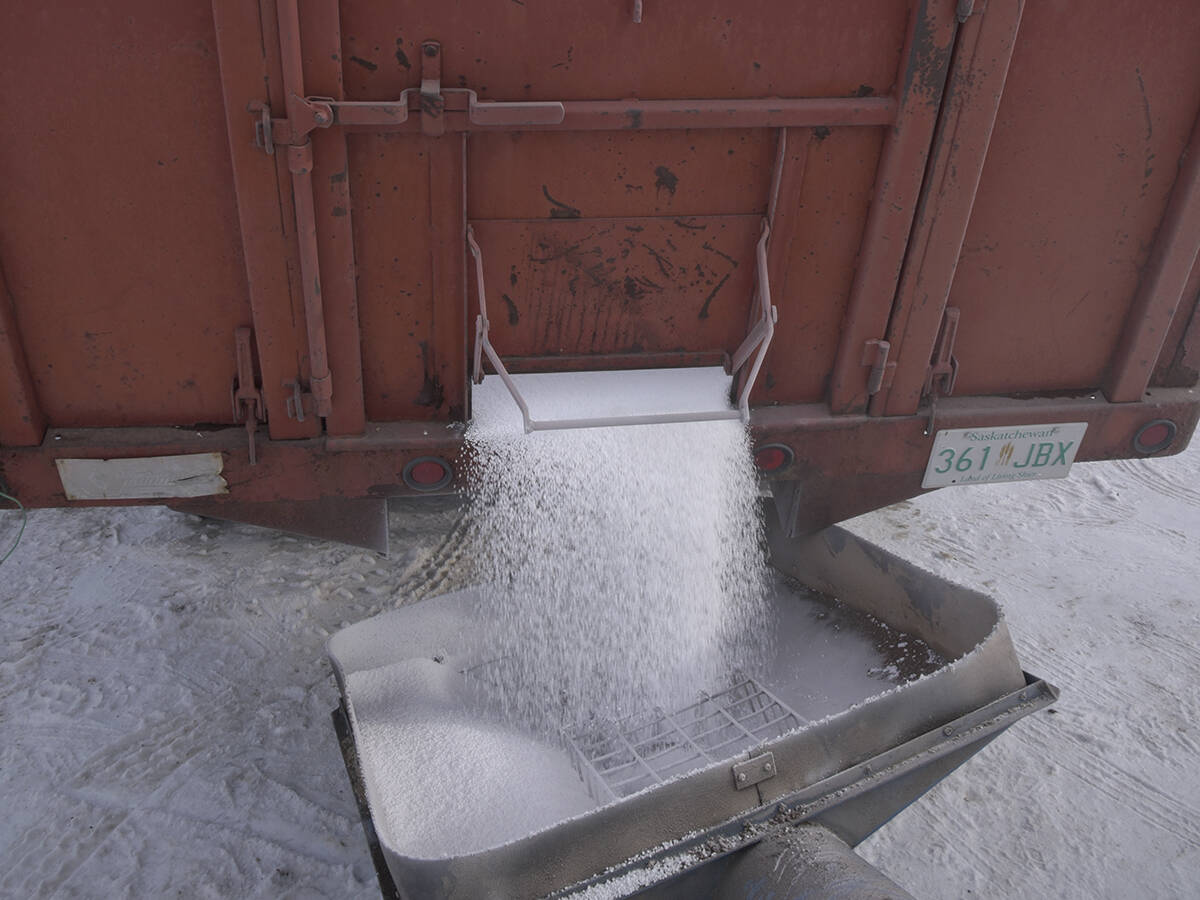Bill Dobson well remembers the buzz in the room when Quebec farm leader Laurent Pellerin brought his message of farmer power to a meeting of Wild Rose Agricultural Producers in Alberta.
“There was enthusiasm, people were inspired,” the Wild Rose president says of the 2004 speech. “They were curious about how Quebec farmers could get so powerful, so united and get so much.”
The message from the president of l’Union des Producteurs Agricoles, delivered that day near Edmonton and many times since to audiences outside Quebec, is that Quebec farmers have decided to work together to achieve better marketing and political results.
Read Also

Urea prices heading higher: analyst
A fertilizer market analyst thinks urea prices have bottomed out and are heading higher through the first quarter of 2026.
He has a simple answer to questions about why the Quebec farm lobby is so powerful.
“The answer is we have agreed to collective marketing and one voice,” he said in an interview in UPA offices on Montreal’s south shore.
“We work hard to make sure we are part of the solution but also to make sure that other sectors in society understand what we need and what we contribute.”
But could the Quebec model of farmer power be exported to other provinces?
“Farmers don’t know how powerful they can be until they organize,” Pellerin said.
Danny Le Roy from the University of Lethbridge, who is in the midst of a year of research at Quebec City’s Université de Laval, does not believe the Quebec model can be exported west.
“I just see at the producer level a philosophy that governments should be an answer in dealing with problems and I think in the West there is more of an individualist spirit, entrepreneurial,” he said. “I really think here the policies have created a culture of dependence that I think would be alien in the West.”
Dobson has a different take on it, but arrives at the same conclusion.
Alberta farmers will never have the ability to demand a role in developing public policy that affects them if they remain divided.
“I would give up Wild Rose in a heartbeat if we could have a strong farm voice democratically run and effective,” Dobson said. “I don’t see that prospect on the horizon. When we are weak and divided, governments can consult but not listen.”
The Quebec farm policy model has been more than three decades in development.
It started in the early 1970s when a former UPA president became Liberal agriculture minister. He convinced the government to legislate the union as the only recognized voice of farmers with a guaranteed financial base of farmer dues and then looked west to the New Democratic Party government of British Columbia, which had developed a farm income stabilization plan that took account of production costs and urban industrial wages.
After the Parti Québécois took power in 1976, the farm sector became key to plans for an independent Quebec.
“The fact that we are a smaller nation in Quebec and we live in French surrounded by English in North America, we have the instinct to get together to defend ourselves,” Pellerin said. “We have a self-defence instinct. It is not a big strategy but a human reaction.”
Over the years, the policy has evolved as the UPA worked with sectors under its umbrella to create marketing boards. The government requires that sectors eligible for stabilization have a collective marketing plan.
The province is nearing the end of a seven-year commitment to invest $2.1 billion in the stabilization program, which guarantees producers a price based on production costs and 90 percent of the average wage of a skilled urban worker. This year it is calculated to be $46,000.
Producer premiums account for one-third of the costs of an actuarially sound program. Cost over-runs mean increased premiums the following year.
Part of the innovation has been a majority farmer voice in the farm support organization Financiere Agricole du Québec, which distributes federal and provincial funds.
“Quebec’s agricultural policy is unique in Canada, if not the whole world,” said Quebec Farmers’ Association president Gib Drury, a cow-calf operator from western Quebec. “Its policy is based on a collective co-operative model and producer control.”
By Canadian standards, the results are stunning.
While most provinces struggle to pay their 40 percent of shared farm program costs, the Quebec government typically spends $3 or more for every federal dollar spent in the province.
In 2005, Quebec recorded realized net farm income of $666 million, almost double Ontario’s and Alberta’s and more than triple Saskatchewan’s, despite fewer farmers in Quebec and lower gross receipts.
While federal spending on the Prairies was higher than provincial spending, in Quebec provincial spending was more than 50 percent higher than spending from Ottawa.
This year, the Quebec government has decided to open Quebec farm policy to a public review with hearings across the province.
“The government of Quebec is at a crossroads in its agricultural policy,” Drury said. “The future of our income stabilization is at stake and unless we extol the benefits of the current system, we can kiss it goodbye.”
For other observers, the stakes are not so high, considering its a provincial election year.
“I think (Quebec premier Jean) Charest understands that UPA has the power to help get a government elected,” said MacDonald College agricultural economist John Henning. “By implication, it could also help defeat a government. Farmers support the program.”
Quebec deputy agriculture minister Michel Saint-Pierre insists the review is not a cover for a retreat from farm programming.
“The idea is not to cut programs but to spend money more efficiently.”














